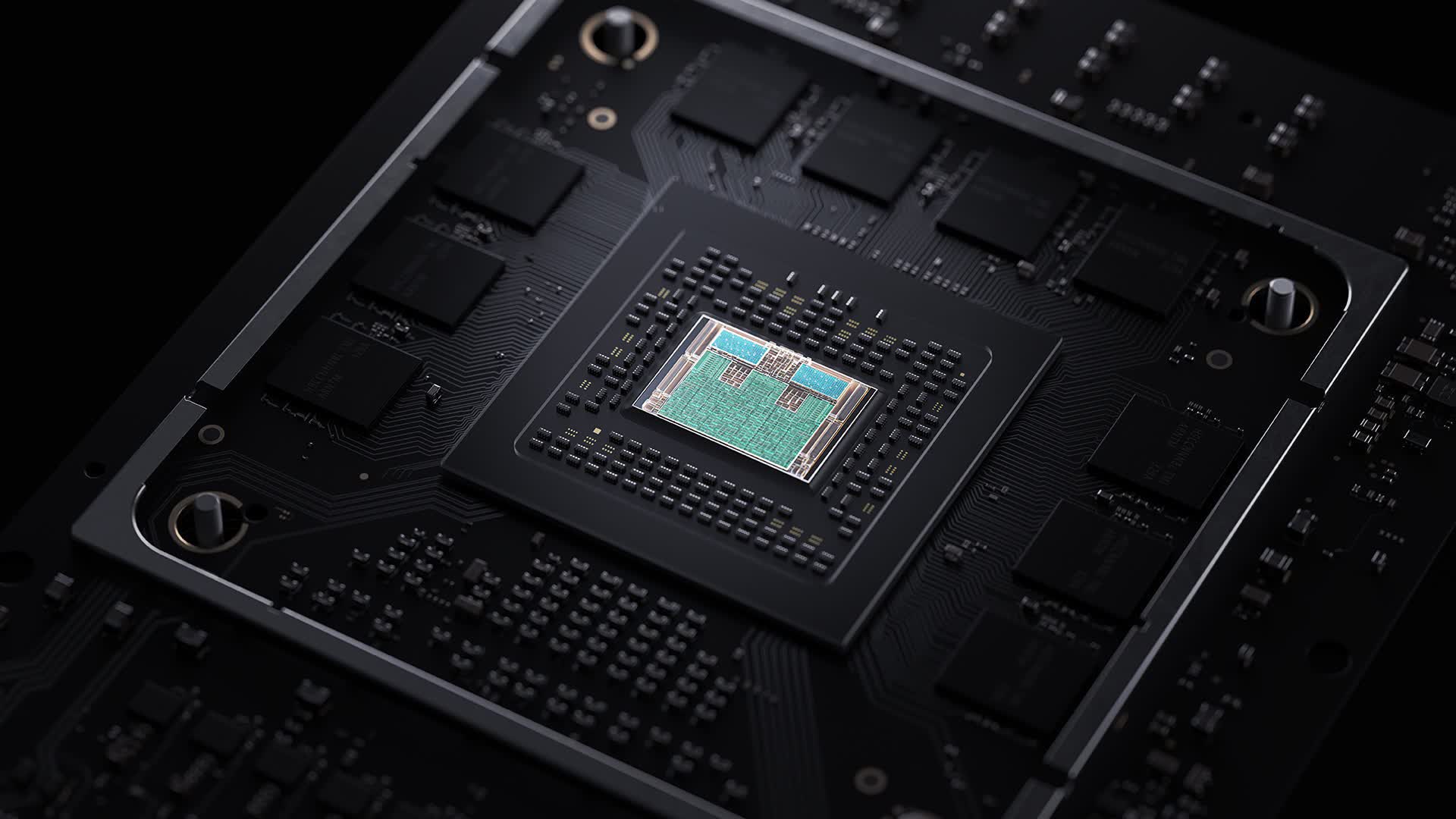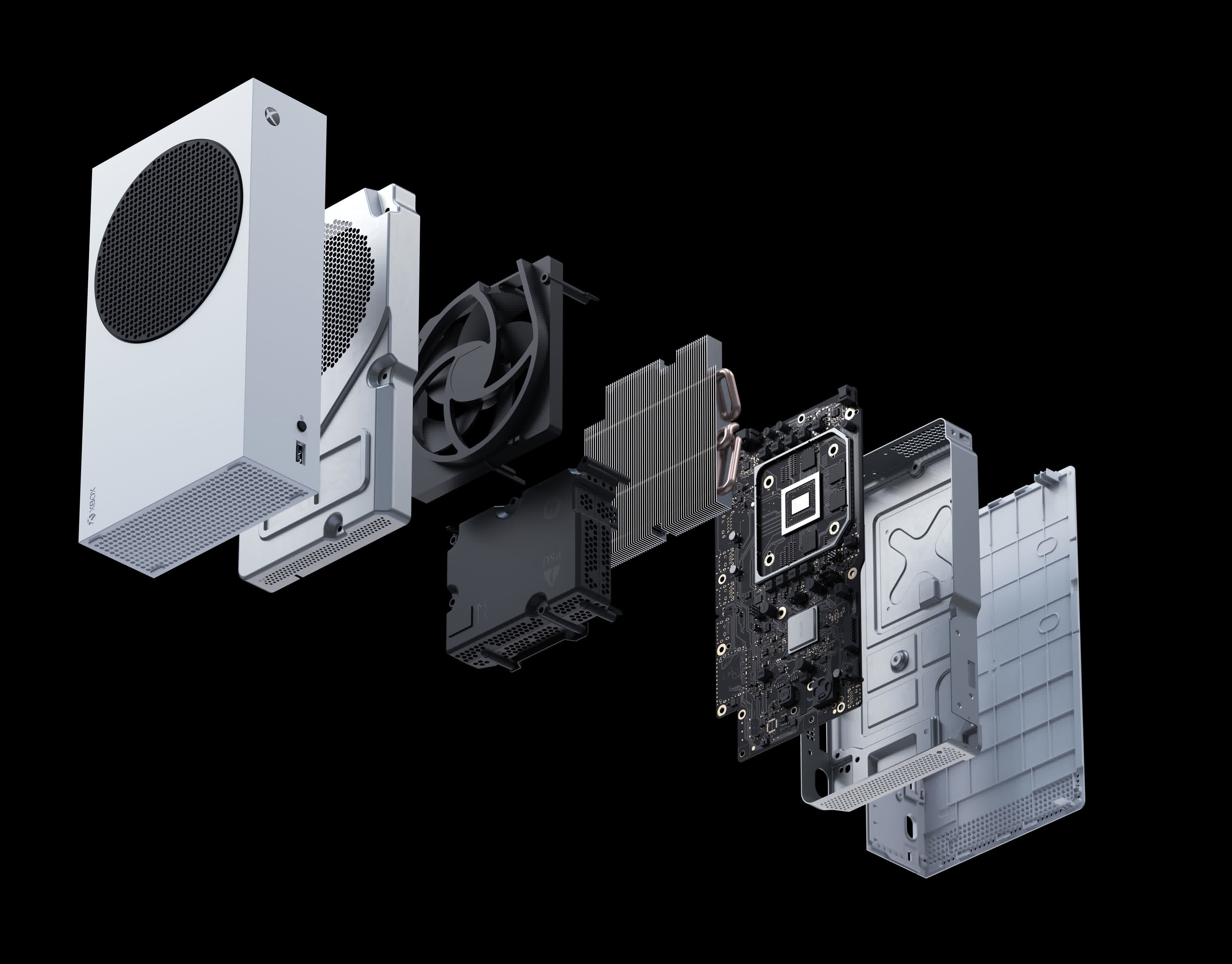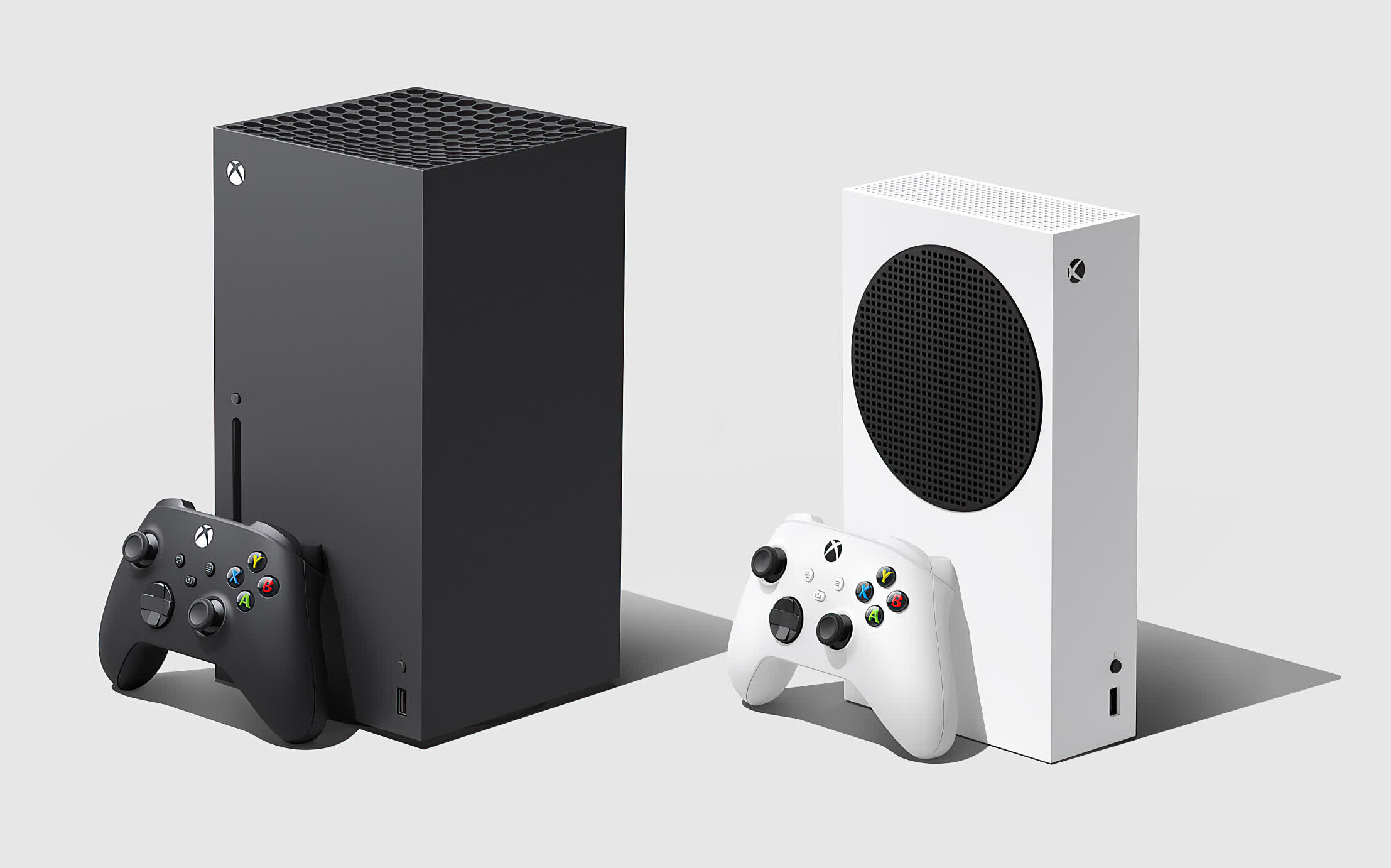Recap: Microsoft has fully unveiled both the Xbox Series X, and the Xbox Series S. Coming in at the aggressive price points of $499 and $299 respectively, the consoles will launch globally November 10th, with pre-orders starting September 22nd. A hardware subscription option is also available, $24.99 for 24 months will get you the Xbox Series S, with the Series X subscription at $34.99.
The wait is finally over. Microsoft has fully unveiled the pricing, specs, and release dates for the Xbox Series X and Xbox Series S. Both consoles are looking to be attractive offers for different audiences, but it might not be obvious which one is best for your needs. Let's make a quick comparison to get the big picture of what Microsoft is offering come November 10th.
| Xbox Series X | Xbox Series S | |
| CPU | 8-Core AMD Zen 2 CPU @ 3.8GHz 3.6GHz w/ SMT Enabled | 8-Core AMD Zen 2 CPU @ 3.6GHz 3.4GHz w/ SMT Enabled |
| GPU | AMD RDNA 2 GPU 52 CUs @ 1.825GHz | AMD RDNA 2 GPU 20 CUs @ 1.565GHz |
| GPU Power | 12.15 TFLOPS | 4 TFLOPS |
| System on a Chip | Custom 7nm Enhanced SoC | Custom 7nm Enhanced SoC |
| RAM | 16GB GDDR6 RAM 10GB @ 560 GB/s 6GB @ 336 GB/s | 10GB GDDR6 RAM 8GB @ 224GB/s 2GB @ 56GB/s |
| Performance Target | 4K @ 60 FPS, Up to 120 FPS | 1440p @ 60 FPS, Up to 120 FPS |
| Storage | 1TB PCle Gen 4 NVMe SSD 2.4GB/sec uncompressed 4.8GB/sec compressed | 512GB PCle Gen 4 NVMe SSD 2.4GB/sec uncompressed 4.8GB/sec compressed |
| Expandable Storage | 1TB Expansion Card | 1TB Expansion Card |
| Backward Compatibility | Thousands of Xbox One and backward-compatible Xbox 360 and original Xbox games at launch. Xbox One accessories are backward-compatible as well. | Thousands of Xbox One and backward-compatible Xbox 360 and original Xbox games at launch. Xbox One accessories are backward-compatible as well. |
| Disc Drive | 4K UHD Blu-ray | Digital Only |
| Display Out | HDMI 2.1 | HDMI 2.1 |
| MSRP | $499 | $299 |
CPU & GPU:
The Xbox Series X comes with an impressive combination of an 8-core AMD Zen 2 CPU, mated with a custom-made RDNA 2 GPU with 52CUs pumping 12.15 TFLOPS of compute power. The Series S comes with a very similar, but cut-down design.
The CPU is nearly identical, with the core count and architecture features the same between the two systems. The only difference is a 200MHz downclock across the board on the cheaper Xbox Series S, a change likely due to the thermal limitations of the smaller system. The GPU is where the biggest difference lie. Using the same AMD RDNA 2 architecture, the Series S GPU contains 20CUs clocked at 1.565GHz bringing just 4 TFLOPS to the table.

RAM:
Both consoles will have GDDR6 solutions closely integrated with their SoCs. The Series X contains 16GB of total RAM with 10GB reaching 560 GB/s and 6GB reaching 336 GB/s. The Series S is cut down to 10GB RAM, with 8GB of it reaching 224GB/s and 2GB a comparatively low 56GB/s.
Storage & Optical Media:
Straight to the point, both consoles are designed with high-performance NVMe SSDs with the Series X at 1TB of built in storage and the Series S at 512GB. Both capacities seem quite limited in today's world of games pushing 100+ GB. Microsoft is allowing users to connect 3rd party storage, but due to the speed limitations of external drives, only Xbox One and earlier titles will be playable from the drives. Series X/S games can be stored on an external drive, but are required to be transferred over to the internal drive or a 1TB expansion card offered by Seagate.
Another cost-saving measure for the Series S is the console going all digital. No disc drive is included in the cheaper system, while the Series X will include a 4K UHD Blu-ray drive. Although backwards compatibility will be the same between the two, users with disc collections of previous generation Xbox games would be forced to buy the games digitally to play on the Series S instead of just popping in the physical copy they already own.

Pricing:
Microsoft has confirmed the Xbox Series X price at $499 / £449 / AU$749. The flagship console will compete directly with Sony's PS5, which has yet to officially reveal its price.
The Xbox Series S will retail at a competitive $299.99 / £249.99 / AU$499.
At a savings of $200, the Series S will definitely capture the market of more price-conscious gamers who may have been on the edge of upgrading in the first place. The extra cash could go towards purchasing a more games, extra storage, or a year's subscription of Xbox Game Pass Ultimate.
Speaking of subscriptions, Microsoft is bringing their all-inclusive hardware subscription offerings to the new consoles as well. $24.99 per month for 24 months will get you the Xbox Series S and a Game Pass Ultimate subscription with no upfront costs. The Series X subscription is $34.99 per month for 24 months.

Who these consoles are for:
By releasing two different consoles to kick off the new generation, Microsoft is hoping to have an Xbox offering for everyone. The Series X is targeted to gamers who want the best of best, enthusiasts who care about 4K resolution gaming at 60-120 FPS.
A potentially overlooked audience that the Series X retains by keeping the disc drive are those with multiple generations worth of disc-based Xbox games. It's a smart move on Microsoft's part, as this group is likely to be older and have more disposable income. It may also make a compelling argument for those who mainly game on PC, even though future first-party titles will be coming to PC. As someone with an Xbox game collection going back to the original system, I find myself tempted to pick up an Xbox Series X to have a system in the living room that supports most of those games at their highest possible quality.
The Xbox Series S seems like a great buy for the more casual gamer who may only play a few titles a year. It's a significantly more powerful console than the Xbox One and PS4 and gives those without 4K displays little reason to spend the extra $200 for the Series X.
At just $299, it's almost guaranteed to be the go-to system parents buy for their kids, or for cash strapped students looking for their next system. That is unless Sony comes back swinging with their own budget offering.
